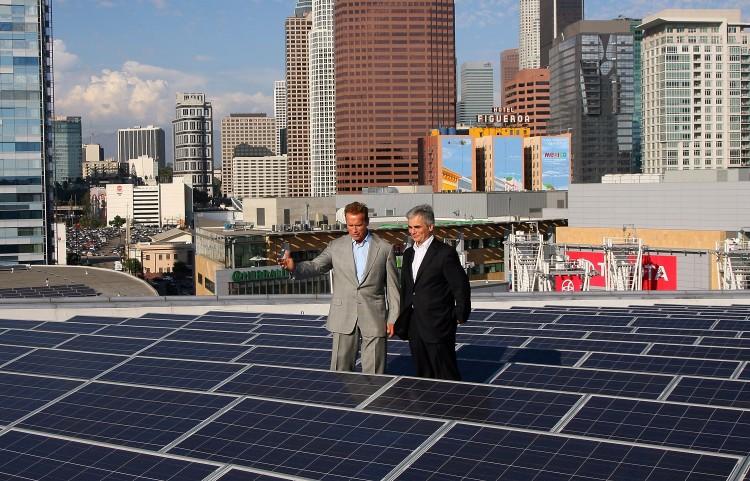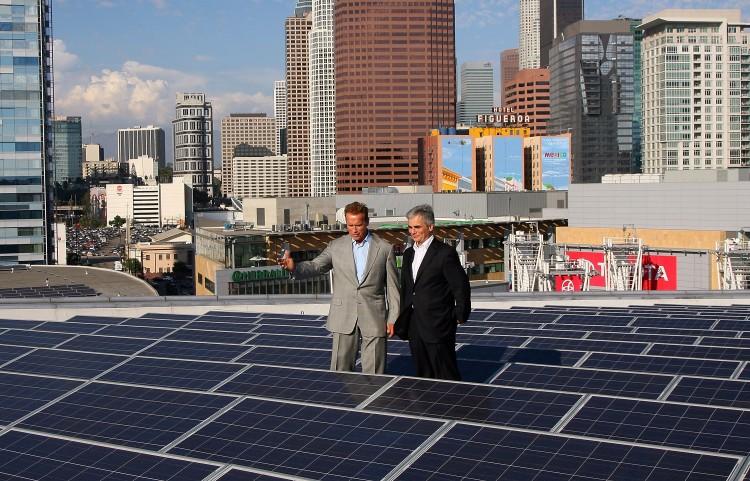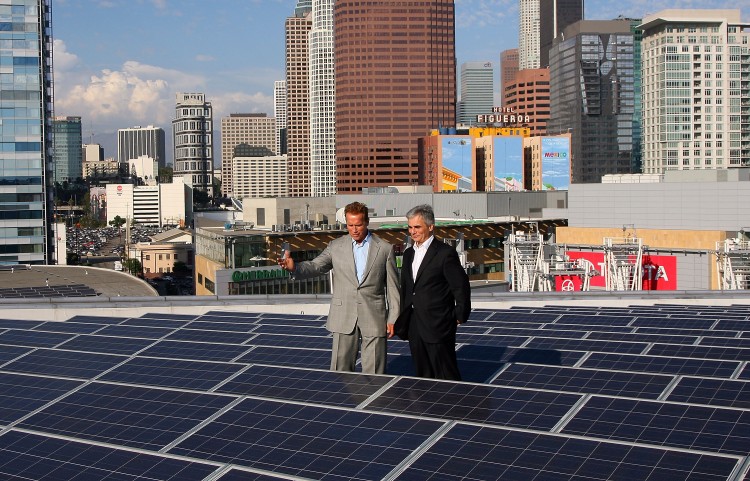Through vigorous regulations on fuel standards, vehicles, and communities, California’s sweeping Global Warming Solutions Act is seen as a broad solution that will attempt to significantly reduce emissions and improve air-quality levels over the next decade and beyond. With rules in place, implementation of the law has been pushed back to 2013, and supporters fear legal barriers and a recessive economy could create further delays.
Also known as Assembly Bill 32 (AB 32), the Global Warming Solutions Act aims to reduce the amount of California’s greenhouse gases (GHGs) by 25 percent by the year 2020. This would essentially bring the state back down to the level they were in the 90s.
The ultimate goal of the law is to have GHG levels down 80 percent by the year 2050.
California looked to be at the forefront of climate change legislation when the bill was signed by former Gov. Arnold Schwarzenegger in 2006. The new law and its components have come under fire since.
The law encompasses altogether four components to accomplish this task, some meeting with more resistance than others. The cap-and-trade component has been the most controversial, while the other three components—lowering the carbon content in fuel, increasing fuel efficiency in vehicles, and encouraging communities to adopt more energy saving policies—have met with varying degrees of opposition and success.
Initially, the fine details and bureaucracy of AB 32’s cap-and-trade took three years to build and complete. Companies producing GHGs would have to buy their permits/allowances for $10 per metric ton (2,200 pounds) of emissions produced.
However, state officials feared that many companies would leave the state. California thus allowed regulators to give away half their allowances to companies for free, as an incentive to stay.
This action instantly came under fire by environmentalists, saying it would defeat the purpose to give allowances out for free. Additionally, environmentalists are currently calling for a higher price of $20 per metric ton.
Contrary to the environmentalists are the industrialists and industrial advocates who claim that price is too high.
“The costs that will be incurred by California’s regulated industries are alarming,” says AB 32 Implementation Group executive director Shelly Sullivan, in a Christian Science Monitor (csmonitor.com) news report March 13. “Consumers and taxpayers will ultimately pick up the tab in higher costs for electricity, consumer products, government services, or even college tuition.
“Cap-and-trade will work only if other states impose similar emission caps in their economies,” Sullivan added.
California’s Air Resources Board (CARB) tells the story from another angle. They released an economic analysis in 2010 that predicts strong economic growth by the year 2020.
“This analysis confirms what economists have been saying all along: that full implementation of the Scoping Plan (AB 32) is the right choice for California to make an affordable transition to a clean energy economy,” said CARB chairman Mary D. Nichols in an agency press release. “It supports continued economic growth and sets us on a course for greater energy security and less dependence on petroleum.”
The analysis, published on arb.ca.gov, predicts several key economic gains: $3.8 billion in savings when fuel expenditures drop by 4.9 percent by 2020; 2 million jobs will be created due to labor demand; personal income will steadily increase at a rate of 2.4 percent per year; the cap-and-trade program will offset and reduce costs; and divergence from AB 32 would increase costs that would be picked up by consumers.
Additionally, California’s cap-and-trade could face legal suits if it violates the Constitution’s commerce clause by forcing utilities in other states to live by California’s regulations.
Carbon Content
The second component of AB 32 has already faced problems with the federal commerce clause, when in 2007 California initiated its low-carbon fuel standard for gasoline fuel. It was later ruled unconstitutional by federal district Judge Lawrence O'Neill, citing that the law discriminates against out-of-state producers of gasoline. Other states—like Washington and Oregon—have already backed off from enacting similar policies.
Opponents claim such low-carbon laws, on a national scale, would make air quality worse.
“A nationwide low-carbon fuel standard would worsen air quality because it would prevent American refineries from importing petroleum obtained from oil sands in western Canada,” said American Fuel & Petrochemical Manufacturers president Charles Drevna, in the csmonitor.com report. “That means the U.S. would have to import more oil in tankers from the Middle East and elsewhere. At the same time, Canadian oil would be shipped in tankers across the Pacific to China and other Asian locations, thereby enlarging the carbon footprint for the oil imported and exported.”
One of the more successful components to the law is the increasing fuel efficiency aspect. The California Air Resources Board spearheaded this section of AB 32 and mandated that 15 percent of all cars sold in the state by 2025 should run with near to or at zero GHG emissions.
By 2025, approximately 1.4 million vehicles would be fully electric, hybrid, or hydrogen. There are currently about 10,000 such vehicles driving on California roads.
“The state has done the lion’s share of the work in spelling out what needs to be done to reach the goals, and it’s a pretty amazing story to see how far the auto companies have come in doing their part,” said Simon Mui of the Natural Resources Defense Council in the csmonitor.com report. “But the oil companies are still dragging their feet and fighting tooth and nail.”
Probably the most successful component of AB 32 has been urging communities to be more energy efficient. This component has influence over urban planning throughout the country, and should continue to gain support as energy costs increase. Specifically, reduction of transportation-related GHGs is sought through better use of roads, open spaces, and residential planning.
One positive example of the above planning is the city of Santa Rosa, which redesigned its downtown around a rail transportation system, minimizing car travel by keeping jobs and retail close.
Additionally, Bowman Design Group of Signal Hill, Calif., reduced the company’s GHG emissions by 65 percent in 2009 by replacing their company cars with hybrids, improving their lighting system, updating their ventilation, and other efficiency measures. The company saves approximately $9,000 a year on their energy costs.
“AB 32 is an impressive effort, and even though it is being implemented gradually over time, it is already delivering benefits to California,” said Bowman Design chairman Tom Bowman.






